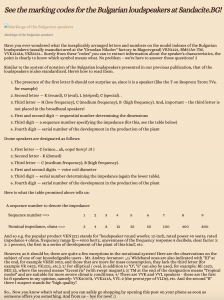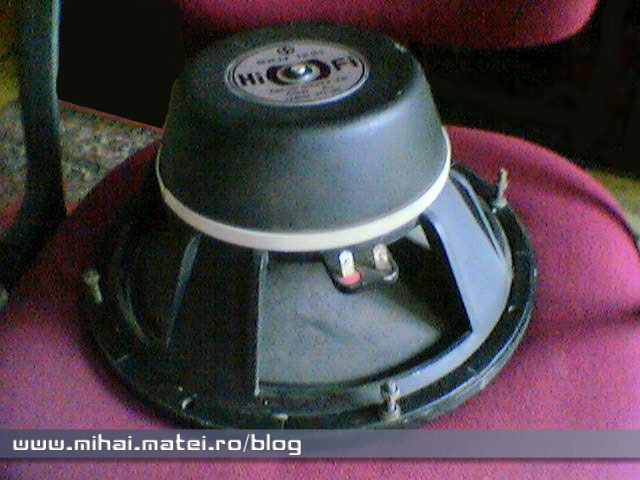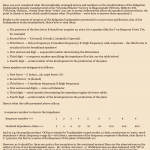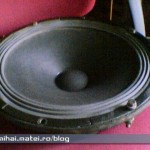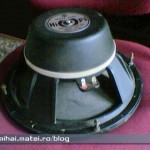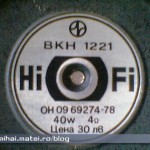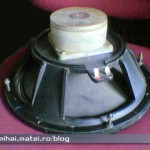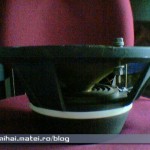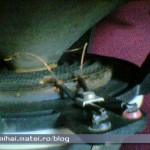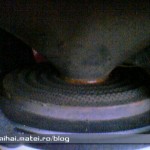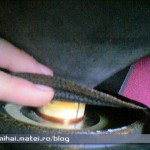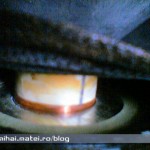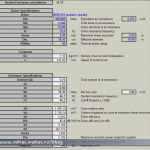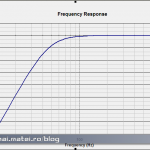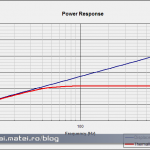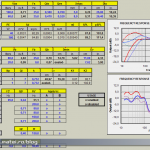In the late 70s, the bass-midrange speakers VKN-1231 (index OH 0469274-82) were very popular for their fast elastic bass and rich timbre in the middle. In the periodical literature of those years, there were many developments based on these speakers, up to Hi-End. But few people knew that there was a broadband version of them (index OH 0969274-78), which was released in a limited series and which is just offered for sale.
The history of the creation of this series of VKN is interesting. In the mid-70s, a group of enthusiasts at the Voroshilov plant in Blagoevgrad, taking Japanese DS (Diatone) speakers as an example, developed their line of speakers, which were supplied both to the domestic market and for export (France, Sweden) … They had a heavy cast frame, a large Alnico magnet, a multi-wave suspension made of fine fabric with impregnation, and a lightweight dense diffuser. All in total provided a band of 25-4500 Hz without dips in the frequency response, sensitivity of about 95 dB, power of 40 W, Qts of about 0.3, weight 3.5 kg. After the 80s, the magnet was changed to ferrite, after the 90s, Chinese components were used, and clones of speakers based on the first models were no longer as interesting as all modern “Chinese meat”.
Difuzorul bulgăresc de 30cm, modelul BKH1221 (VKN1221 – mai multe despre denumire), căruia i-am măsurat acum 4 ani parametrii, între timp a suferit o uşoară degradare. Mai exact adezivul folosit la lipirea spider-ului pe coşul difuzorului s-a a devenit complet uscat, cauzând dezlipirea.
UPDATE: situl sandacite.bg pare sa nu mai functioneze, link catre Internet Archive: https://web.archive.org/web/20211204134945/https://www.sandacite.bg/%D0%BE%D0%B7%D0%BD%D0%B0%D1%87%D0%B5%D0%BD%D0%B8%D1%8F-%D0%B1%D1%8A%D0%BB%D0%B3%D0%B0%D1%80%D1%81%D0%BA%D0%B8-%D0%B2%D0%B8%D1%81%D0%BE%D0%BA%D0%BE%D0%B3%D0%BE%D0%B2%D0%BE%D1%80%D0%B8%D1%82%D0%B5%D0%BB/ si screenshot al paginii mai jos.
Am profitat de ocazie pentru a studia cum arată bobina. Am demontat şi capacul magnetului.
Coşul difuzorului este din aluminiu, la fel şi capacul magnetului, care se fixeaza printr-un şurub central. Eticheta cu modelul şi specificaţiile este tot din aluminiu inscripţionat cu vopsea şi este fixată de acelaşi surub.
Şi dacă tot l-am reparat, am zis să reproiectez şi câteva tipuri de incintă pentru el.
Continut original din pagina sandacite.bg:
Have you ever wondered what the inexplicably arranged letters and numbers on the model indexes of the Bulgarian loudspeakers (usually manufactured at the “Grozdan Nikolov” factory in Blagoevgrad) VKN1221, ВМ57А9-ТМ, VVK131А8, VKS5231… Surely from these “codes” you can to extract information about the speaker’s characteristics, the point is clearly to know which symbol means what. No problem – we’re here to answer those questions! 🙂
Similar to the system of notation of the Bulgarian loudspeakers presented in our previous publication, that of the loudspeakers is also standardized. Here’s how to read them.
- The presence of the first letter B should not surprise us, since it is a speaker (like the T on Resprom T5001 TVs, for example)
- Second letter — K (round), O (oval), L (striped), C (special). .
- Third letter — H (low frequency), C (medium frequency), B (high frequency). And, important – the third letter is not placed in the broadband speakers!
- First and second digit — sequential number determining the dimensions
- Third digit — a sequence number specifying the impedance (for this, see the table below)
- Fourth digit — serial number of the development in the production of the plant
Dome speakers are designated as follows:
- First letter — C (wince… ah, oops! Sorry! 😀 )
- Second letter – K (domed)
- Third letter — C (medium frequency), B (high frequency).
- First and second digits — voice coil diameter
- Third digit — serial number determining the impedance (again the lower table).
- Fourth digit — serial number of the development in the production of the plant
Here is what the table promised above tells us:
A sequence number to denote the impedance
Sequence number ==> 1 2 3 4 5 6 7 8 9 Nominal impedance, ohms ==> 2 4 8 15 25 50 100 400 800 And so e.g. the popular product VKN1221 stands for “loudspeaker round woofer, 12-inch, rated power 40 watts, rated impedance 4 ohms, frequency range fp = 4000 hertz, unevenness of the frequency response 8 decibels, clear factor 3: 2: 1 percent, the first in a series of development of the plant of this kind’, etc.
However, as it should be, there are quite a few exceptions in the notational system! Here are the observations on the subject of one of our knowledgeable users – Mr. Andrey Avramov: ,,1/ Wideband ones are also indicated with “Ш” at the end, for example VKSH 3013, and those that are more for mass consumption, they lack the third letter (for example VK 0822, VK1221, etc.); 2/ For elliptical / oval, in addition to “O”, “E” can also be used, for example: ВЕ-1523, ВЕЕ 33, where the second means “Eccentric” (with swept magnet); 3/ TM at the end of the designation means “Tropical model” and are suitable for more severe climatic conditions; 4/ There are VVK and VVL speakers – these are the first hi-fi speakers in my opinion, namely: VVK2007A, VVK131A, VVL-2 (the prototype of VLDs), etc. And the second “B” there I suspect stands for “high quality”.
So… Now you know what’s what and you can safely go shopping by opening this post on your phone as soon as someone offers you something. And from us – bye for now! 🙂
